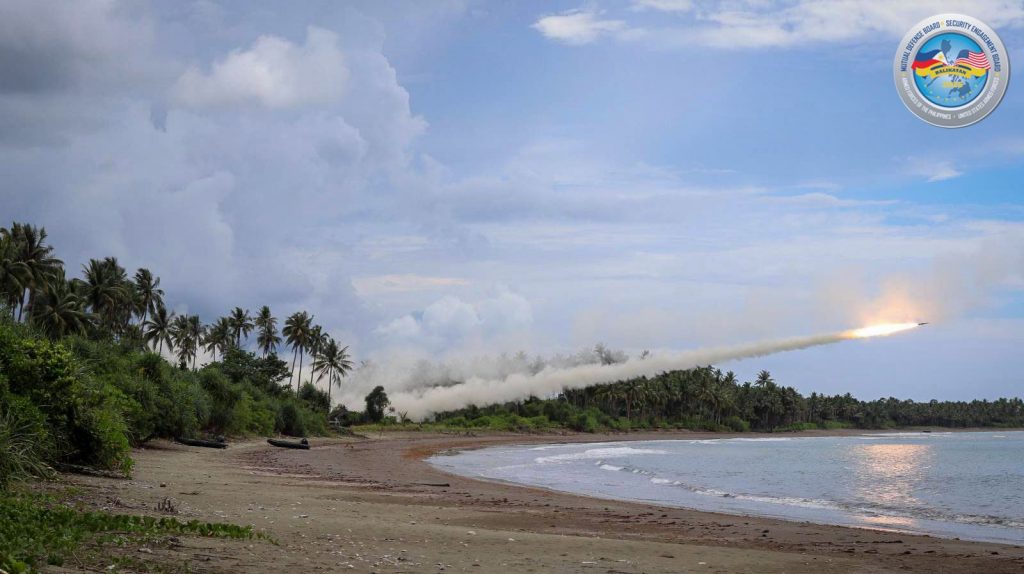The US military fired munitions into the South China Sea this week using HIMARS rocket systems amid soaring tensions with China in the region.
The live-fire drills occurred on the Philippine island province of Palawan as part of the annual US-Philippine Balikatan exercise, which has involved 9,000 US troops, 5,000 Philippine soldiers, 260 Australian service members, and smaller deployments from Japan, France, the UK, and several other countries, according to Stars and Stripes.
According to the Philippine Armed Forces’ Western Command, the live-fire drills involved US, Philippine, and Australian troops and were conducted in Rizal, a municipality on Palawan’s west coast, which is on the South China Sea. Philippine forces also fired missiles and artillery into the sea.

“The drill culminated with a precision strike from the HIMARS, highlighting the allied forces’ capability to deliver fast, accurate, and decisive responses to amphibious threats—an essential element of regional deterrence,” the Western command said.
A US Marine Corps spokesman told Stars and Stripes that the HIMARS was fired at set targets in the sea. “What you saw here today was simply long-range fires from a platform that normally fires from land to land,” the spokesman said.
The Balikatan exercise has also involved drills in northern Philippine provinces near Taiwan. The US also deployed an anti-ship missile system, the Navy Marine Expeditionary Ship Interdiction System (NMEIS), for the exercises.
Last year, the US deployed a controversial missile system, known as the Typhon, for the Balikatan exercises, and it has remained, signaling the NMEIS and the HIMARS could be in the Philippines to stay.
The Typhon missile launcher is a ground-based system concealed in a 40-foot shipping container that can fire nuclear-capable Tomahawk missiles, which have a range of more than 1,000 miles, and SM-6 missiles, which can hit targets up to 290 miles away.
China has strongly opposed the US missile deployments to the Philippines, and the South China Sea has become a potential flashpoint for a conflict between the US and China, as the maritime dispute between Manila and Beijing is heating up.
Since the previous Trump administration, it has been the policy of the US that the US-Philippine Mutual Defense Treaty covers attacks on Philippine boats in the South China Sea. That means the US has committed to going to war with China if the dispute over rocks and reefs turns hot.


